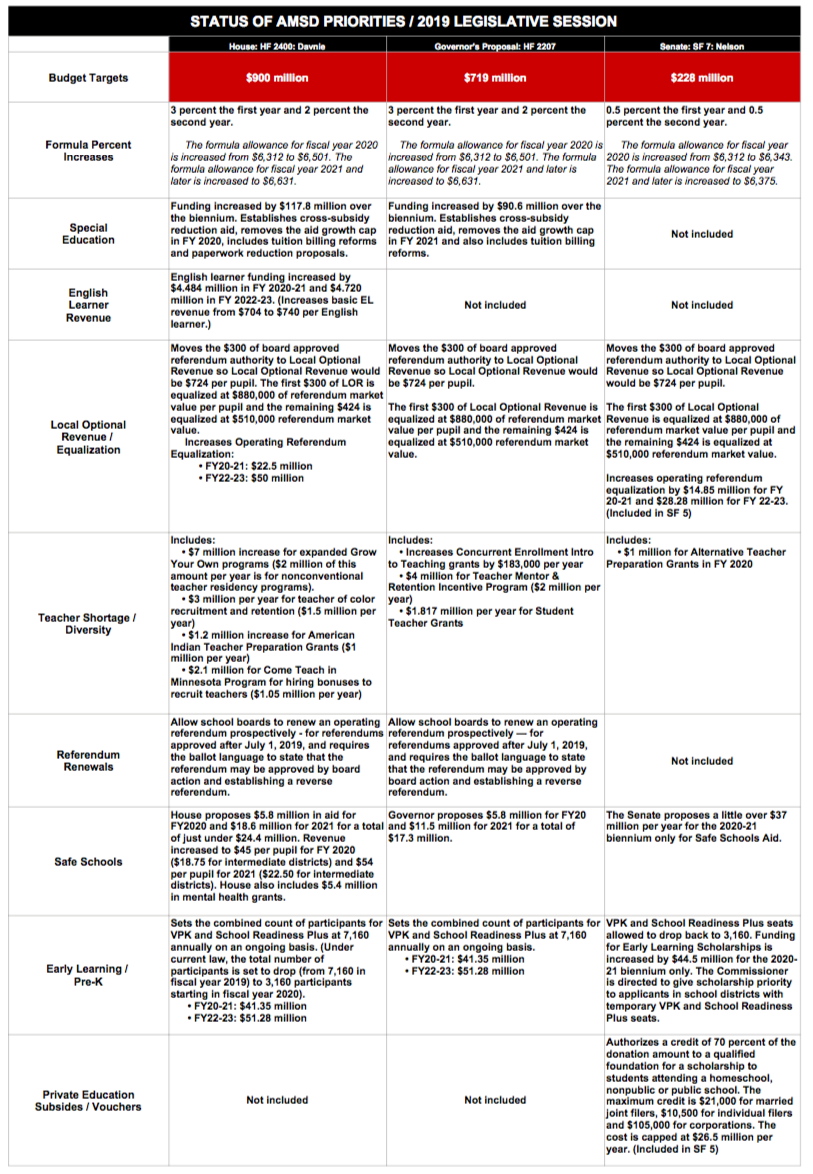Research: Major Differences in House/Senate E-12 Funding Proposals
Research is a monthly feature in the AMSD Connections member newsletter.
With the release of the Senate Omnibus E-12 Bill this week, the E-12 Education budget plans from the House, Senate and Governor are all on the table leaving major differences to resolve before the May 20 adjournment. A summary of the status of AMSD’s legislative priorities is shown below.
 The proposals from the House and Governor have many similarities, including proposed increases to the basic funding formula of 3 percent for the 2019 -20 school year and an additional 2 percent increase for the 2020-21 school year. In addition, the Governor and House propose new investments to address the growing special education cross-subsidy and funding to retain the current slots in the Voluntary Prekindergarten (VPK) and School Readiness Plus programs.
The proposals from the House and Governor have many similarities, including proposed increases to the basic funding formula of 3 percent for the 2019 -20 school year and an additional 2 percent increase for the 2020-21 school year. In addition, the Governor and House propose new investments to address the growing special education cross-subsidy and funding to retain the current slots in the Voluntary Prekindergarten (VPK) and School Readiness Plus programs.
The Senate bill provides just a 0.5 percent increase to the formula each year and does not address the special education cross-subsidy or provide the funding necessary to retain the 4,000 Voluntary Prekindergarten/School Readiness slots.
The bulk of the $228 million Senate bill, beyond the 0.5 percent formula funding, is dedicated to school safety. The Senate proposes a little over $37 million per year for Safe Schools Aid and $2.5 million per year for school-linked mental health grants.
A recent survey of AMSD member school districts shows that a 1 percent formula increase would leave nearly two-thirds of AMSD districts with budget shortfalls, totaling almost $164 million over the biennium. The survey asked AMSD member districts to project their budget outlook under a 1 percent, 2 percent and 3 percent formula increase. The survey results make it clear that absent a 3 percent formula increase and progress toward addressing the special education cross-subsidy, many school districts will face budget shortfalls.
• Link: View the results of the AMSD member budget survey
The Legislature embarks on an Easter/ Passover recess beginning April 13 and will resume activity on Tuesday, April 23. When they return from the recess, legislators will have less than one month to resolve their differences and adopt the biennial budget that will establish the level of funding for our schools for the next two years.

